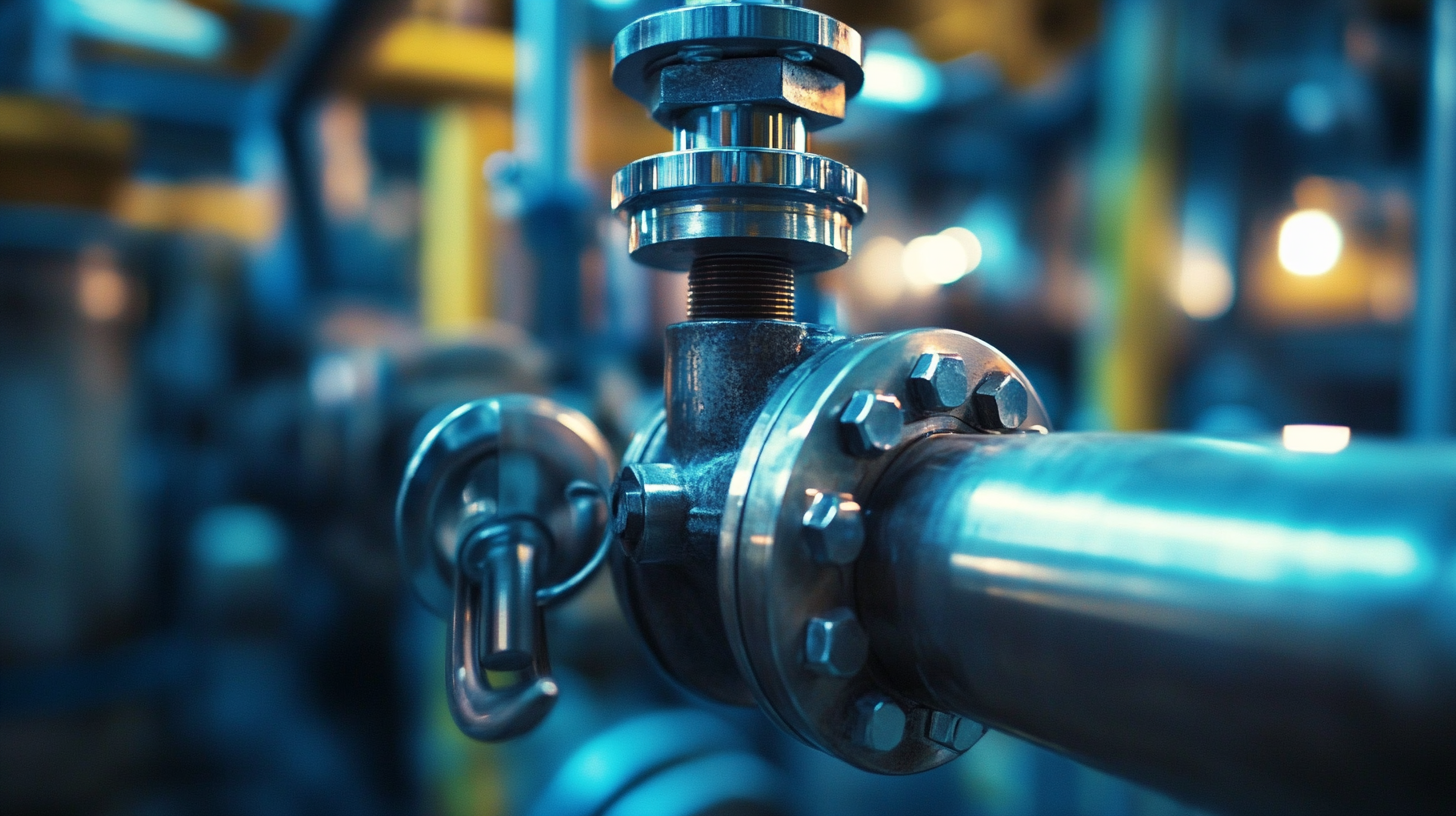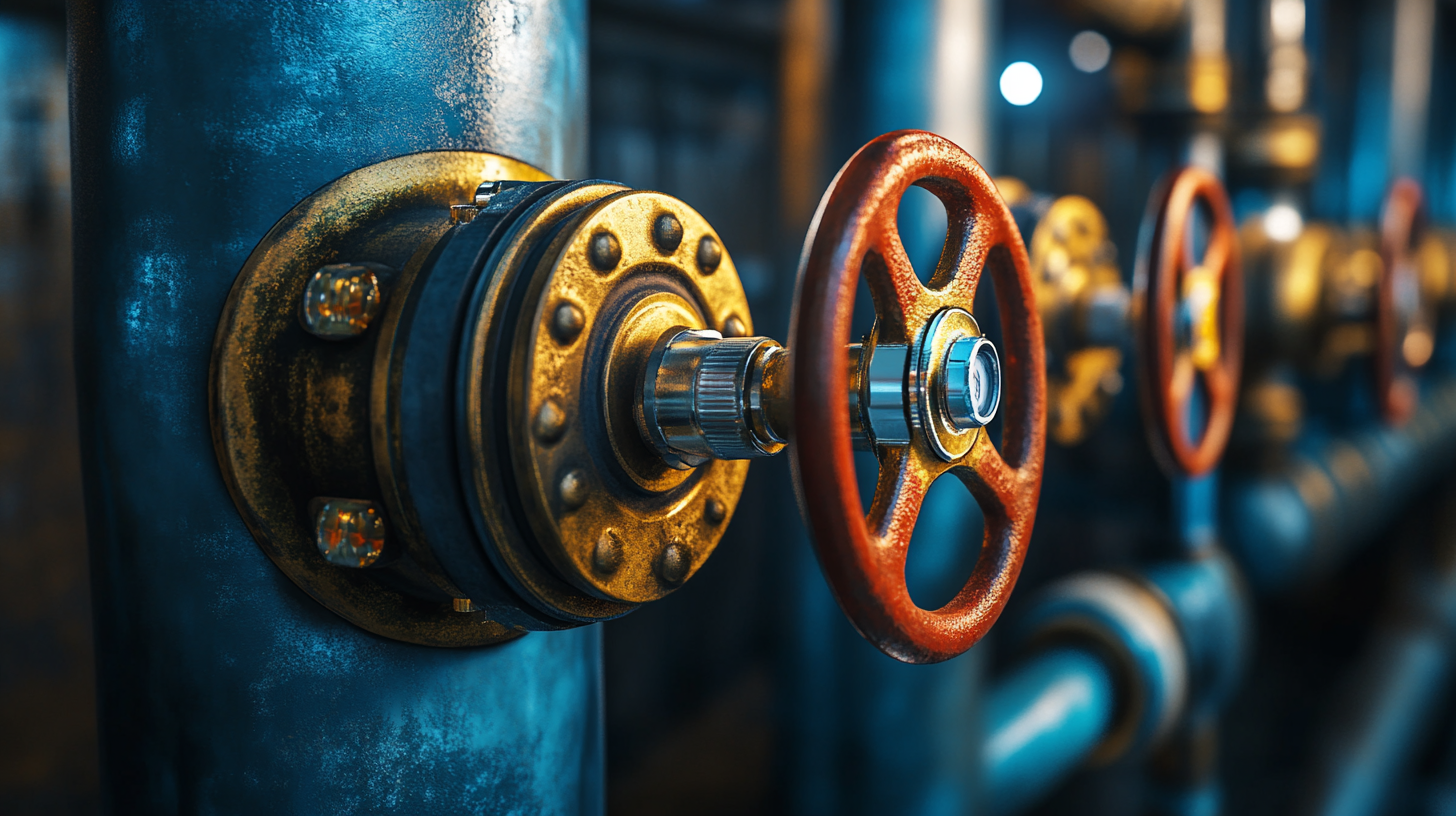Understanding Industry Standards: How to Choose the Best Back Valve for Optimal Performance
In the ever-evolving landscape of industrial applications, selecting the appropriate back valve is crucial for ensuring optimal performance and efficiency. According to recent industry reports, nearly 30% of equipment failures in fluid systems are attributed to inadequate valve selection, highlighting the importance of adhering to established industry standards. With the global valve market projected to reach USD 89.1 billion by 2027, driven by the increasing demand for automation and improved safety protocols, understanding the various types of back valves and their specifications is essential for engineers and decision-makers alike. This blog will explore the critical factors influencing the selection of back valves, providing insights to help you navigate the complexities of industry standards and make informed choices that enhance operational reliability and system longevity.

Key Features of Different Types of Back Valves for Optimal Performance
When selecting the best back valve for optimal performance, several key features should be considered to meet industry standards. Different types of back valves, such as swing check valves, lift check valves, and dual-disc check valves, offer unique advantages depending on the application. For instance, swing check valves are typically preferred in low-pressure systems due to their efficiency and minimal pressure drop, while lift check valves are more suitable in high-pressure conditions. According to industry reports, implementing the right back valve can enhance system reliability by up to 30%, significantly reducing downtime and maintenance costs.
Moreover, the materials used in fabricating back valves play a crucial role in their longevity and performance. Data shows that valves made from corrosion-resistant materials can extend service life by over 50% when exposed to harsh environments. Additionally, factors such as valve size, flow rate specifications, and installation orientation should also be evaluated to ensure that the selected back valve aligns with the operational demands of the system. Making informed choices backed by industry research can lead to improved efficiency and sustainability in various applications.
Understanding Industry Standards: How to Choose the Best Back Valve for Optimal Performance
| Type of Back Valve | Material | Pressure Rating (PSI) | Temperature Range (°F) | Flow Coefficient (Cv) | Applications |
|---|---|---|---|---|---|
| Swing Check Valve | Brass | 150 | -20 to 200 | 5.6 | Water Supply Systems |
| Lift Check Valve | Stainless Steel | 300 | -40 to 400 | 4.0 | Fuel Systems |
| Dual Plate Check Valve | Cast Iron | 250 | 0 to 250 | 6.5 | Wastewater Treatment |
| Ball Check Valve | PVC | 150 | -10 to 140 | 3.0 | Irrigation Systems |
Understanding Application Scenarios for Various Back Valve Designs
When selecting a back valve, understanding the application scenario is crucial for optimal performance. Different designs are tailored to meet specific needs across various industries. For instance, in water treatment facilities, check valves are often favored to prevent backflow and protect equipment from potential damage. They are essential in applications where consistent flow direction is necessary to ensure safety and efficiency.

In contrast, applications within the oil and gas sector may require more robust designs, such as double-disc or swing check valves, which are capable of withstanding higher pressures and temperatures. These valves not only prevent backflow but also accommodate fluctuating flow rates inherent in oil pumping systems. Furthermore, in HVAC systems, back valves need to support various types of media, including gases and liquids, thus demanding versatile designs that can handle changes in state and pressure.
Ultimately, the right choice hinges on understanding the operational environment and specific performance requirements. Different materials, configurations, and sealing mechanisms can significantly impact the efficiency and reliability of back valves, making it imperative to assess the uniqueness of each application before making a selection.
Comparative Analysis: Ball Valves vs. Check Valves for Specific Uses
When choosing between ball valves and check valves, understanding the specific applications of each type is essential for optimal performance. Ball valves are designed for quick shut-off, providing a reliable seal and minimal flow resistance when fully opened. Their ease of operation and long service life make them ideal for on-off applications in various industries, including oil and gas, water treatment, and chemical processing. The design of a ball valve also allows for minimal pressure drop, making it a preferred choice where flow efficiency is critical.
On the other hand, check valves serve a different purpose as they allow fluid to flow in only one direction, preventing backflow. This functionality is crucial in systems where backflow could cause damage or contamination, such as in sewage and waste management systems, as well as in water supply lines. The suitability of check valves depends largely on the fluid dynamics and the specific needs of the application. Understanding these distinctions enables engineers and decision-makers to select the right valve type, ultimately optimizing performance and ensuring system reliability in various industrial settings.
Factors to Consider When Selecting the Right Back Valve for Your System
When selecting the right back valve for your system, several critical factors must be considered to ensure optimal performance. First, you need to evaluate the fluid type that will pass through the valve. Different materials offer varying compatibility with fluids, which can affect longevity and efficiency. For instance, corrosive fluids may require valves made from stainless steel or specialized plastics to prevent degradation over time.
Another important consideration is the pressure and temperature conditions under which the valve will operate. Each back valve has a specific pressure rating and temperature tolerance, and exceeding these limits can lead to failures or leaks. Additionally, inspect the valve’s size and flow capacity, ensuring it aligns with your system's requirements to maintain adequate fluid dynamics. Choosing a valve that is too small can restrict flow, while one that is too large may not perform effectively, underscoring the importance of careful sizing and specification.
Understanding Industry Standards: Back Valve Performance Comparison
This chart compares the flow rates of different back valve models. Selecting the right back valve is crucial for ensuring optimal system performance. Consider factors such as flow rate, durability, and compatibility to make an informed decision.
Industry Standards and Regulations Impacting Back Valve Selection
When selecting a back valve, understanding the industry standards and regulations that govern their use is crucial for ensuring optimal performance and safety.
According to the American National Standards Institute (ANSI), back valve specifications must comply with the relevant codes to prevent backflow and contamination in water systems.
For instance, ANSI/AWWA C506 outlines the requirements for backflow preventers and is instrumental in guiding engineers and facility managers in their selection process.
Moreover, the Environmental Protection Agency (EPA) emphasizes compliance with the Safe Drinking Water Act, which necessitates that all valves installed in potable water systems not only meet functional criteria but also adhere to safety standards to protect public health.
A study by the Water Research Foundation revealed that improperly selected or installed back valves could lead to a 30% increase in maintenance costs due to system failures.
By closely adhering to these industry standards and regulations, professionals can significantly enhance system reliability and efficiency while minimizing long-term costs.
